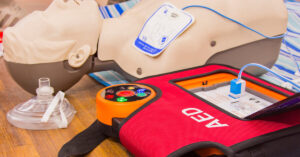Caring for mothers and newborns is a miraculous and rewarding process. You’re responsible for guiding a parent through childbirth and caring for a new life. For many medical students, the idea of being a part of this intimate process draws them to the field in the first place. If you’re thinking of becoming an integral part of an L&D team, let’s review five tips for becoming a labor and delivery nurse.
Become a Registered Nurse
Before you can become a labor and delivery nurse, you have to become a licensed registered nurse (RN) to gain basic nursing skills. To become an RN, you have two choices. You can either earn your associate’s degree in nursing (ADN) or your bachelor of science in nursing (BSN)—an ADN requires two years of education, while a BSN requires four. BSNs are a step higher as they require more training, but some people get their ADN instead due to a lack of time or resources. Fortunately, once you get your ADN, you can get your BSN later, but either way, you’ll have to pass the NCLEX to get your certification.
Obtain the Required Certifications
There is no program that will allow you to get a diploma in Labor and Delivery specifically. Once you become an RN, you have to receive additional education to work in the field. To become an L&D nurse, you need a BLS and ACLS certification and a neonatal resuscitation certification. All these certifications remain valid for two years, and you will need to continually renew them for the rest of your career.
Start Accumulating Experience
Once you have the right certifications, it’s time to gain some hands-on experience. Depending on your schedule and persistence, you may not be in a labor and delivery unit right away. You may need to work as a regular RN for a few years to refine your skills, or you may get the opportunity to work in an L&D unit. Either way, you need to become competent in perioperative skills, high-risk labor, and OB triage.
Invest in Additional Training
Once you’ve worked in an L&D unit for at least two years, you can then work on getting your certification in Inpatient Obstetric Nursing. This certification teaches you how to work with and care for expectant mothers who are hospitalized before, during, or after childbirth. This isn’t a requirement for becoming an L&D nurse, but it does keep your skills sharp and give you a competitive edge when applying for jobs. After receiving your certification in Inpatient Obstetric Nursing, you’ll need to renew that certification every three years.
Consider Gaining an Advanced Degree
If you’re looking to get to the top of your field, you don’t have to become a doctor to do so. In this case, you may want to consider gaining an advanced degree with a master of science in nursing. There are many careers that an MSN can open up, and again, while not required, it will give you a competitive edge. The more education you receive, the easier it becomes to garner advanced, higher-paying job opportunities in the L&D field.
With these tips for becoming a labor and delivery nurse, you’re on your way to working in the field of your dreams. Here at CPR123, we can help you get a little closer to that dream. We provide a neonatal resuscitation program certification course that will help you meet the requirements to become an L&D nurse.







